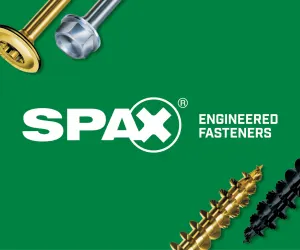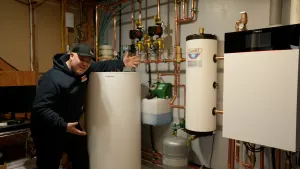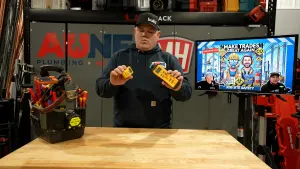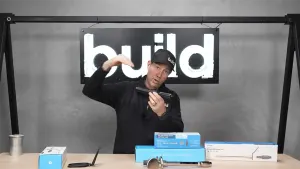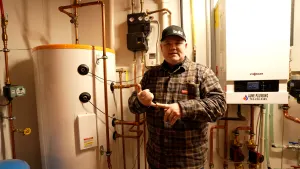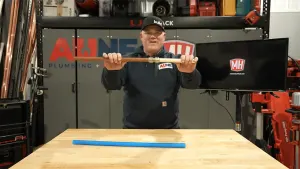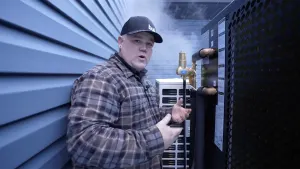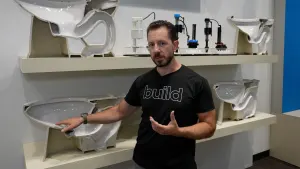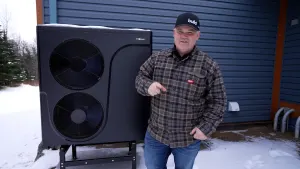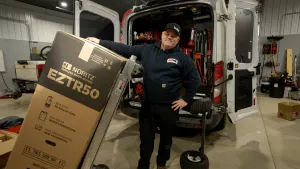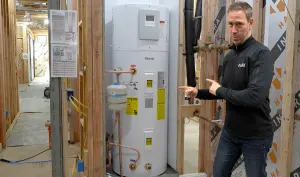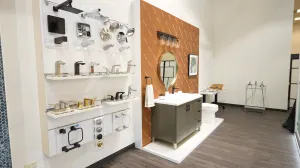Residential builders have plenty of options when selecting a water heater, from basic tank-style appliances to the newer and more efficient heat-pump water heaters. Cost is always a consideration, but there are many other factors that deserve attention: how long the water heater will last, how much maintenance it will require, how the water heater actually performs, and how much energy it will use.
Energy-efficiency is important. Domestic hot water costs the average U.S. home between $400 and $600 a year, according to the U.S. Department of Energy, and accounts for roughly 17% of total household energy consumption. That’s second only to space heating.
With all of these considerations in mind, we’ll look at five types of water heaters: tank-style heaters powered by natural gas, tank heaters powered by electricity, heat-pump water heaters, gas-fired tankless water heaters, and solar thermal systems. All have strengths and weaknesses.
Tank-style electric
Electric tank heaters are the most basic and most inexpensive of the lot. They’re available in a range of sizes, and there’s nothing complicated about how they work. Heating elements, typically connected to a 240-volt circuit, heat the water and maintain it at a set temperature in the tank. When a hot-water tap is turned on, water pressure in the system pushes hot water to its point of use. The temperature in the tank falls as cold water is drawn in, and the heating elements kick back on.
What these appliances gain in simplicity, they lose in efficiency. A thermostat keeps water in the tank at the set temperature whether it’s being used or not, and these so-called “standby” energy losses can add up. Choosing a well-insulated model is key to lower energy bills.
Heating elements are fairly simple to replace should they burn out. Scale buildup reduces efficiency, so flushing out the tank yearly and replacing the anode rod every 5 to 7 years should extend the appliance’s service life. The Department of Energy estimates a storage tank heater will last between 10 and 15 years.
The Uniform Energy Factor, the new metric for gauging efficiency, should make comparisons between models more accurate. Check for the rated First Hour Delivery— how much hot water the appliance can produce in one hour — and check the attached energy label for an estimate of relative efficiency and energy costs. Energy Star-rated models will be more efficient.
Costs vary. A mid-sized, 50-gallon electric tank heater from A.O. Smith, designed for a small family, is available for about $480 online.
Tank-style gas
Gas water heaters work in essentially the same way as electric models, the only difference being the added complications of venting exhaust gases.
Condensing water heaters are a big step up from standard gas-burning water heaters. This technology squeezes a little more energy out of exhaust gases, improving efficiency and lowering stack temperatures to the point where they can be vented through plastic rather than a masonry chimney. Operating efficiencies of better than 90% are typical. Expect a price premium for a condensing unit: one online source lists a conventional 50-gallon water heater for $600, while a condensing unit of the same size from the same manufacturer is $2,000. But the first-hour rating of the condensing unit is 127 gallons, vs. 88 gallons from the non-condensing appliance. This is where an accurate assessment of household hot water needs is time well spent. How many people will be taking showers during the morning rush? Will someone be doing laundry at the same time? What about the dishwasher? Add up the numbers and choose accordingly.
As with electric models, flushing out the tank annually and replacing the anode rod(s) every 5 to 7 years will help the tank last longer. Compare energy labels and first-hour ratings; it may be possible to drop to a lower tank size than what you’re used to if the appliance produces enough hot water in the first hour to satisfy household needs. Other tips: choose a tank with a metal drain cock rather than a plastic one, and getting a water heater with a longer warranty may buy you a glass-lined or stainless steel tank that won’t rust.
Finally, unless the appliance is a sealed-combustion unit, a fuel-burning water heater introduces the risk of back-drafting, where pressure imbalances inside the house can draw combustion gases back down the chimney and into the home. For this reason, some builders prefer only electric appliances, especially in a high-performance house with a very tight building envelope.
A high-quality, well insulated electric water heater can be controlled remotely. For larger homes, you may consider a zoned hot water system. If a zone is not frequently used, or the house will be vacant for a period of time, you could turn the heater off. Finally, these systems can include a hot water recirculating pump, which provides instant-on hot water at a faucet some distance from the water heater. The recirculating pump can be on a timer or can be controlled from a wall switch or your mobile phone. This can be a great combination of modest acquisition cost, long useful life (when maintained) and energy efficiency.
Heat-pump water heaters
These appliances use an air-source heat pump to heat water, with the unit mounted on top of the storage tank. Like the heat pumps used to heat and cool whole houses, these devices move heat from one place to another rather than burn fuel to heat water directly. They extract residual heat from ambient air, and dump cooler air into their surroundings — a factor when deciding where to place one because they cool the air around them. These hybrid units have electric resistance coils to boost output when needed.
While conventional electric water heaters operate at roughly 100% efficiency, air-source heat pumps have efficiencies three or more times that much: for every $1 of energy that goes into the heat pump, more then $3 worth of energy in the form of hot water is returned.
Heat-pump water heaters have slower recovery rates than conventional units, so it may make sense to invest in a larger tank than you’d normally choose. Heat-pump water heaters are more expensive than conventional water heaters. A 50-gallon Voltex from A.O. Smith is about $1,400 from one online supplier, for example, but energy savings over time should more than recoup the higher upfront cost.
Tankless water heaters
Tankless, or on-demand, units heat water only when it’s needed. They have three big advantages: you won’t run out of hot water (assuming the unit is sized correctly), they take up much less room than a tank-style heater, and with proper maintenance they should last at least 20 years.
Tankless heaters experience no standby losses because the appliance doesn’t keep a large tank of water hot. When a faucet is turned on, the flow of water activates the heater. Shut off the tap, and the water heater goes off, too. But keep in mind, these are not “instant” water heaters — the water still has to travel from the appliance to your tap. Instant on at the source of need type solutions are more complex and expensive than simple hot water recirculating pumps.
Tankless heaters come in gas-fired and electric models. Electric models have lower flow rates than gas appliances, and they draw a lot of current, which may mean installing a larger main panel to handle the load (a large model may require a 60-amp, 240-volt circuit). That makes gas units more practical for most homeowners. They can be installed outdoors in warm climates.
Prices vary considerably, depending on output and whether the unit makes use of super-efficient condensing technology. A basic non-condensing 6.5-gallon-per-minute Rinnai model is about $670 at Lowe’s while an Energy Star condensing model from the same manufacturer rated at 11 gallons per minute is about $2,000. Condensing units are not only more efficient but also can be vented with plastic pipe.
Sizing a tankless heater involves adding up the number of devices you are likely to run simultaneously and calculating the gallons per minute that each of them uses. You’ll also have to account for the temperature rise — the difference between the incoming temperature of the water and the temperature that will be needed at the fixture. In areas with hard water, flushing out the appliance every year or two will extend the life of the appliance.
Regular maintenance is essential if you want the water heater to last. If you don’t want to invest the time in learning how to de-scale the heater, plan on hiring someone to do it for you. For more on that issue, check this video (http://mattrisinger.com/tankless-water-heater-annual-flush-routine/).
Solar thermal system
Solar hot water systems come in a variety of configurations: active and passive, with several types of rooftop collectors. That said, there are a few generalizations that can be made about these systems: they will probably not produce all the hot water you will need, and the systems can become complex (and more prone to malfunctions than conventional water heaters). One big sell: the fuel for a solar thermal system is free.
Active systems use a pump to move water (warm climates) or a heat transfer fluid (cold climates) through the rooftop collectors and then a heat exchanger inside a storage tank. Passive systems, which are less expensive and less efficient, have an integral tank above the collector or rely on a thermosyphon to move fluids. Although output is linked to the location, the amount of available sunlight, and the details of the system, a solar thermal system should provide between 40% and 60% of hot water needs. The rest will have to come from a backup heater.
A residential solar thermal system can approach $10,000 (DIY installed systems will be cheaper). That, combined with the sinking cost of photovoltaic panels (now roughly $3 per installed watt) suggest that investing in PV panels and a high-efficiency electric water heater is a more economical choice for most homeowners.

 Share on facebook
Share on facebook Tweet
Tweet Email
Email Share on Linkedin
Share on Linkedin



